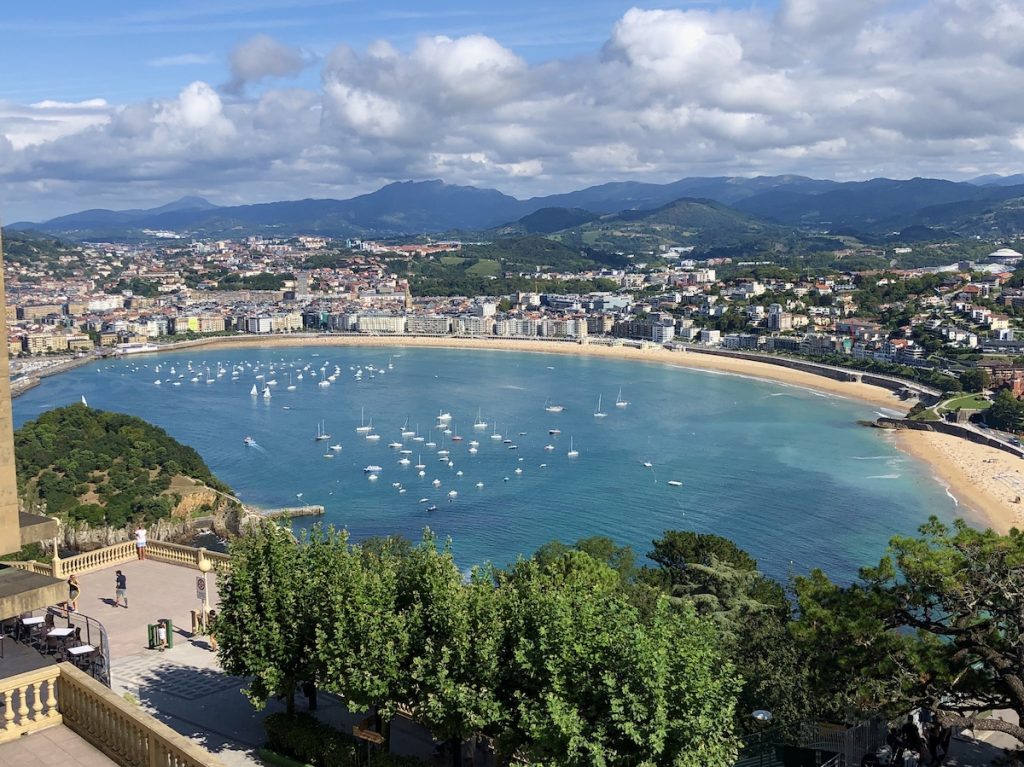
The Spanish village of San Sebastian makes an appearance in Ernest Hemingway’s The Sun Also Rises, the brilliant first novel that would propel the expat writer and his sparse, direct style to international fame, and eventually to remaking American literature.
It tells the story of a group of American and British expats who travel from Paris to Pamplona to attend the running of the bulls and watch the bullfights at the week-long Festival of San Fermin.
Hemingway famously used the term ‘Lost Generation’ — coined by his friend and early mentor Gertrude Stein — to describe the disillusioned young who returned from the First World War unable to readjust to normal life, and they are the subject of his story.
In the sober aftermath of the festival, the novel’s protagonist, Jake Barnes, goes to San Sebastian to spend a few quiet days swimming alone at the beach that is the town’s most distinctive feature.
“I looked around at the bay, the old town, the casino, the line of trees along the promenade, and the big hotels with their white porches and gold-lettered names,” Hemingway writes, in the mind of Jake. “Off on the right, almost closing the harbor, was a green hill with a castle. The raft rocked with the motion of the water. On the other side of the narrow gap that led into the open sea was another high headland.”
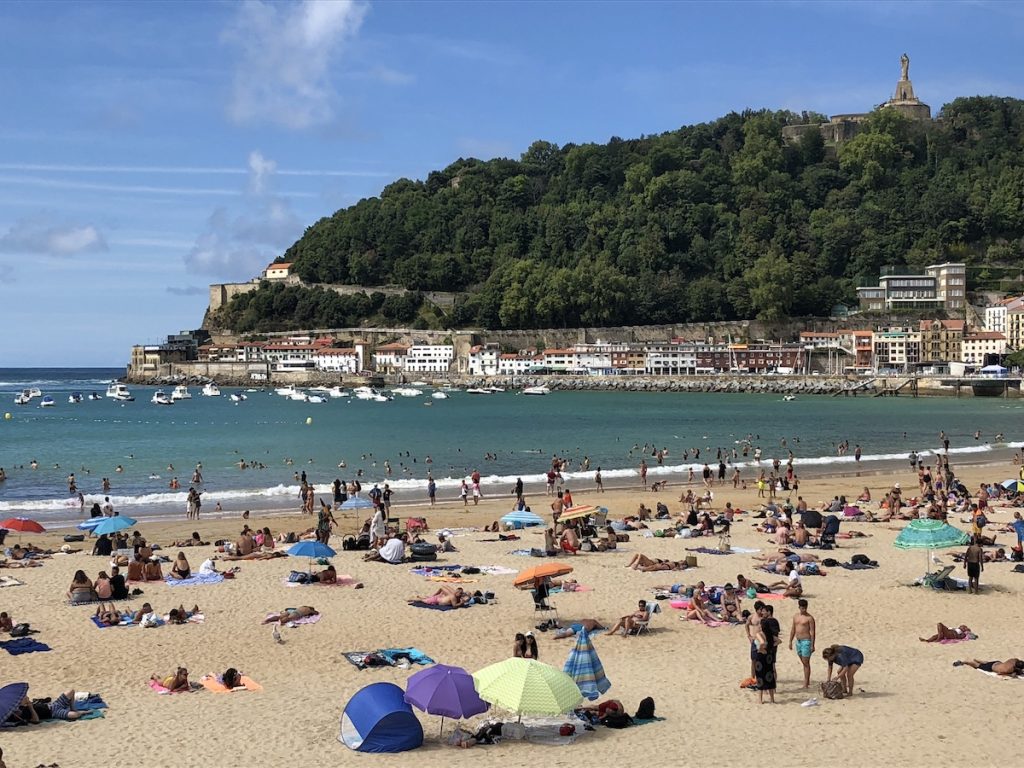
The broad crescent of the Playa de la Concha and Playa de Ondarreta are best seen from Monte Igueldo, the western headland that hems it all in.
We walked the length of the bay front promenade, where tiny bikinis and tanned topless sunbathers pulled my eyes from other rockier and less inviting peaks. A clanking funicular at the bay’s western end hauled us up the hilltop, where a small amusement park dispensed cotton candy, bumper car rides and merry-go-round whirls to screaming children.
We’d really only gone up there for the view, but my wife insisted on riding the €2.80 ‘roller coaster’ — an ancient train on a narrow track, operated by a man with a handbrake who sat behind me. It dipped up and down a few hills and through a tunnel, and ended one minute after we’d set out.
It was underwhelming, but the Spanish screaming overreaction added an interesting cultural element. And when it was over, it was time to descend to beach level and trudge the promenade in the sun back to the cobblestoned old town, where the bars would be setting out their first pintxos.
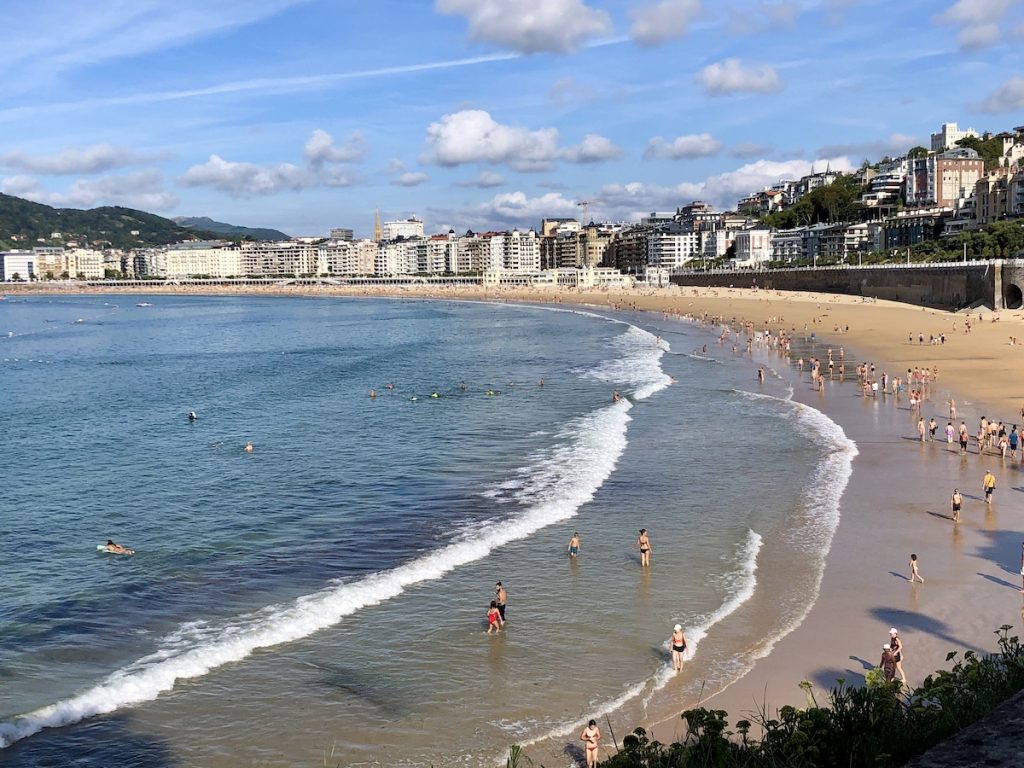
That’s San Sebastian’s greatest claim to fame, besides the picture-perfect swimmable beach on the otherwise turbulent Bay of Biscay. This small town is home to the second-highest concentration of Michelin starred restaurants in the world (Kyoto, Japan is number one).
But I wasn’t interested in paying crippling prices for minuscule portions of food set out on a massive mostly-empty plate with an artistic drizzle of sauce. We were there to sample what aficionados said was the world’s best pintxos.
We laid the foundation at Goiz-Argi where the house specialty is gambas a la plancha, washed down with the rehydrating sustenance of cold draft beer.
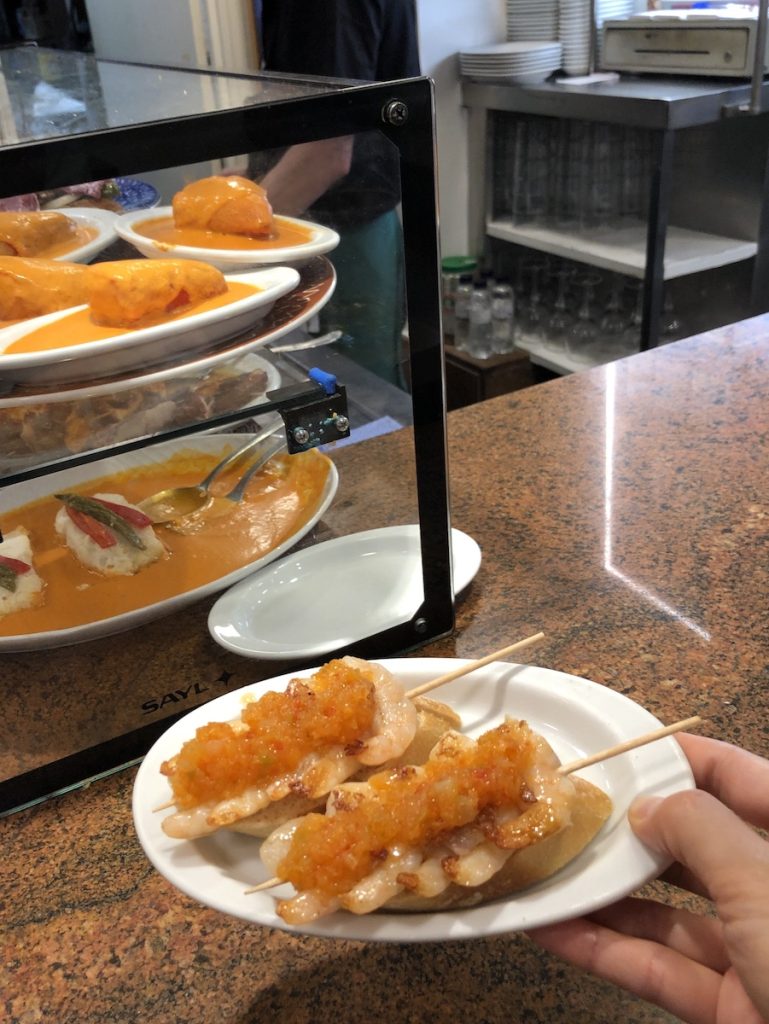
We didn’t have far to walk for the next taste sensation. Bar Sport was just a few doors down, and their famous grilled fois gras pintxos lent weight to the tidbits we’d previously consumed, accompanied by gentle lashings of txakoli wine.
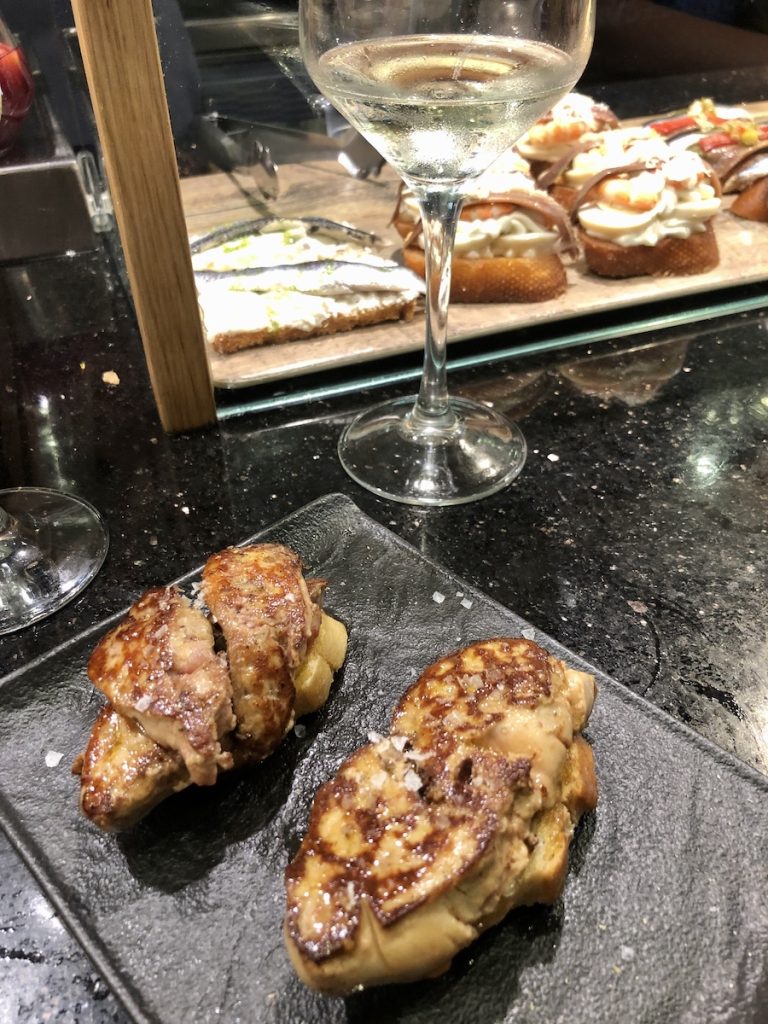
From there, we walked a few blocks, past the 16th century Gothic San Bizente eliza church, to La Cuchara de San Telmo. There was a queue outside for tables, but just enough space for those willing to squeeze up to the bar in the standing section.
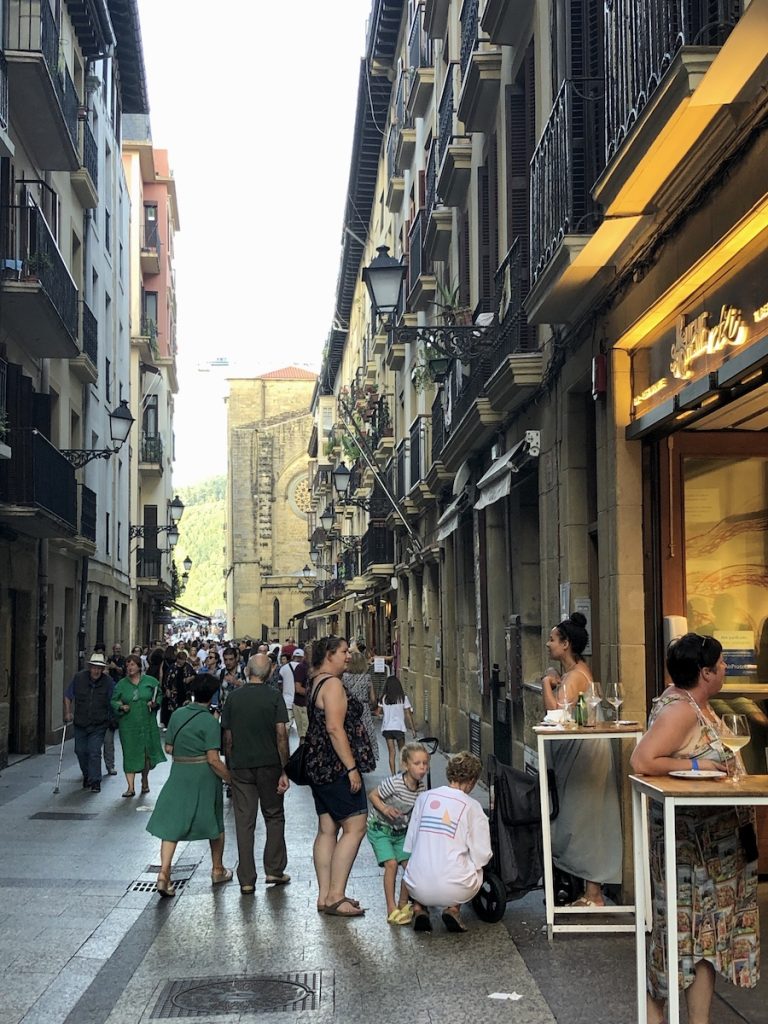
We’d come for the braised veal cheeks, so tender they could be cut with a fork, one of the most memorable bits of culinary delight on a trip mostly devoted to eating. I enjoyed mine with a velvety smooth glass of rioja wine.
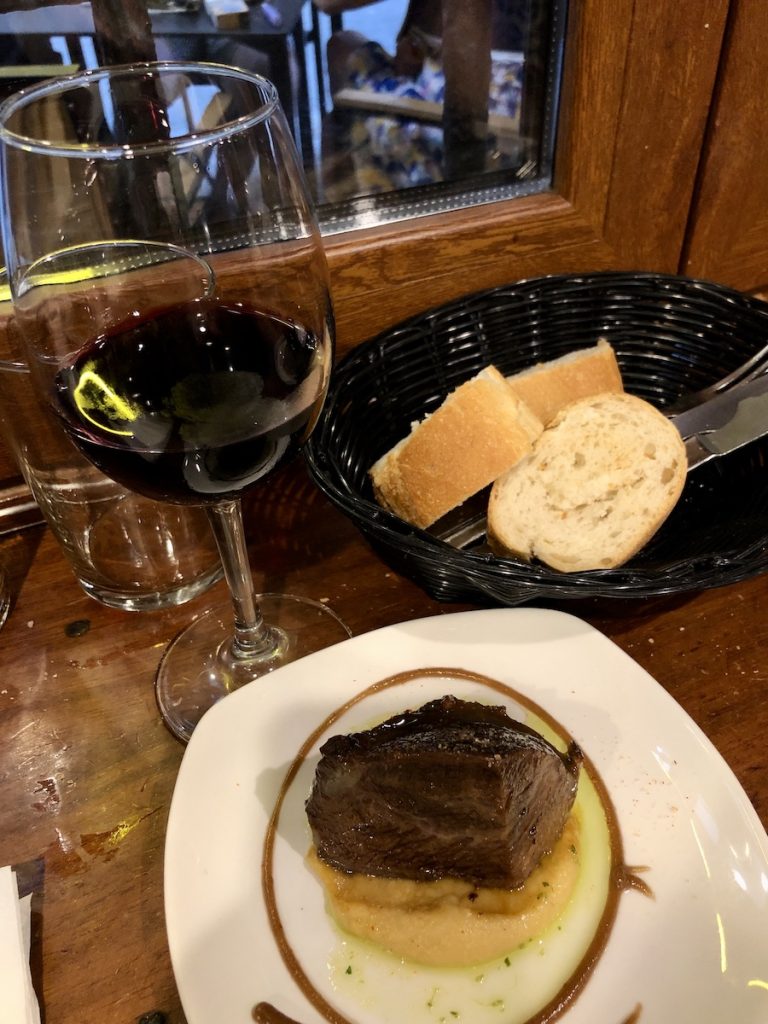
As you can imagine, I was feeling seriously full by this point, but we had two more stops to make. I called a time out for a walk along the Pasealeku berria balcón, where the Urumea River meets the sea.
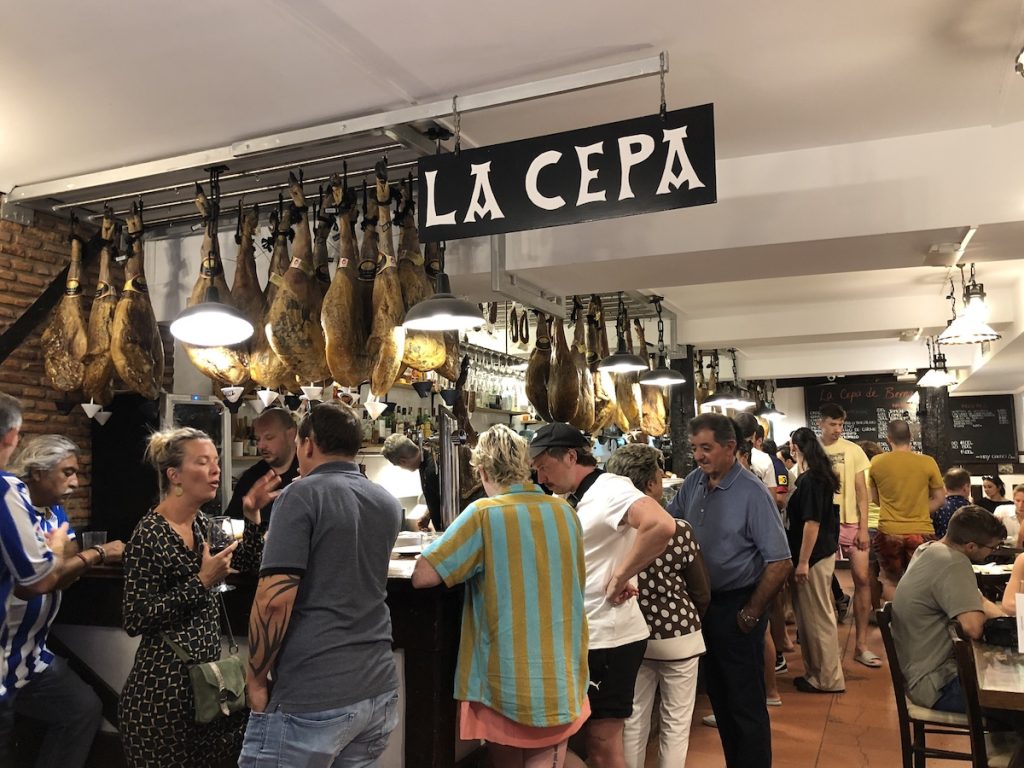
We couldn’t contemplate leaving San Sebastian without sampling the Iberico ham at La Cepa. We ordered the small plate, and two more glasses of rioja wine. The paper thin slices of meat were shaved off one of the many hams hanging from the ceiling, and eaten with your fingers. I can say without reservation that it was the best ham I’ve ever tasted. It melts in the mouth like butter.
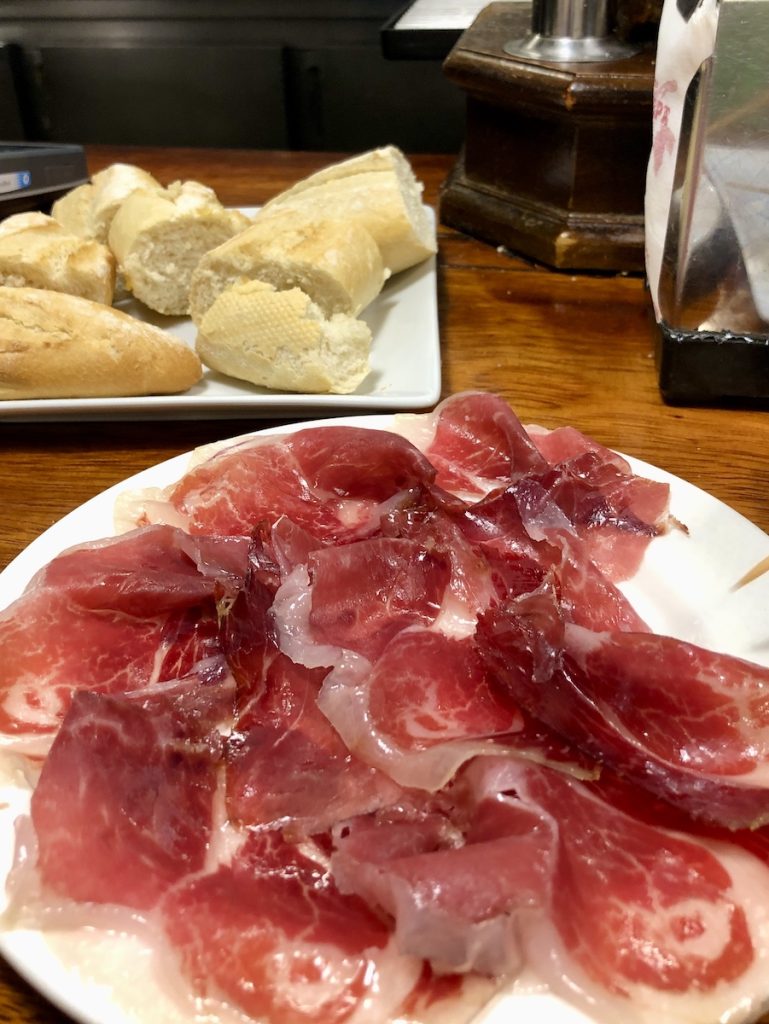
I was ready to burst by this point, and probably would have if not for the medicinal effect of the wines I’d consumed. But the thing is, we hadn’t eaten dessert.
I know what you’re thinking. “You’re not a dessert man, Murd. You’re sweet enough.”
It’s impossible for me to refute that statement. But it’s equally impossible to visit San Sebastian without trying the famous cheesecake at La Viña. Caramelized on the outside with a smooth creamy centre, it’s the perfect finish to an evening of gastronomic pedestrianism.
And on that note, we made a frantic rush to catch the hourly bus back to the suburb of Astigarraga, where we had a strange but comfortable little room in an old factory building accessed by freight elevator.
You’d just about need a freight elevator if you indulged in as many pintxos as we did in that lovely seaside town.
